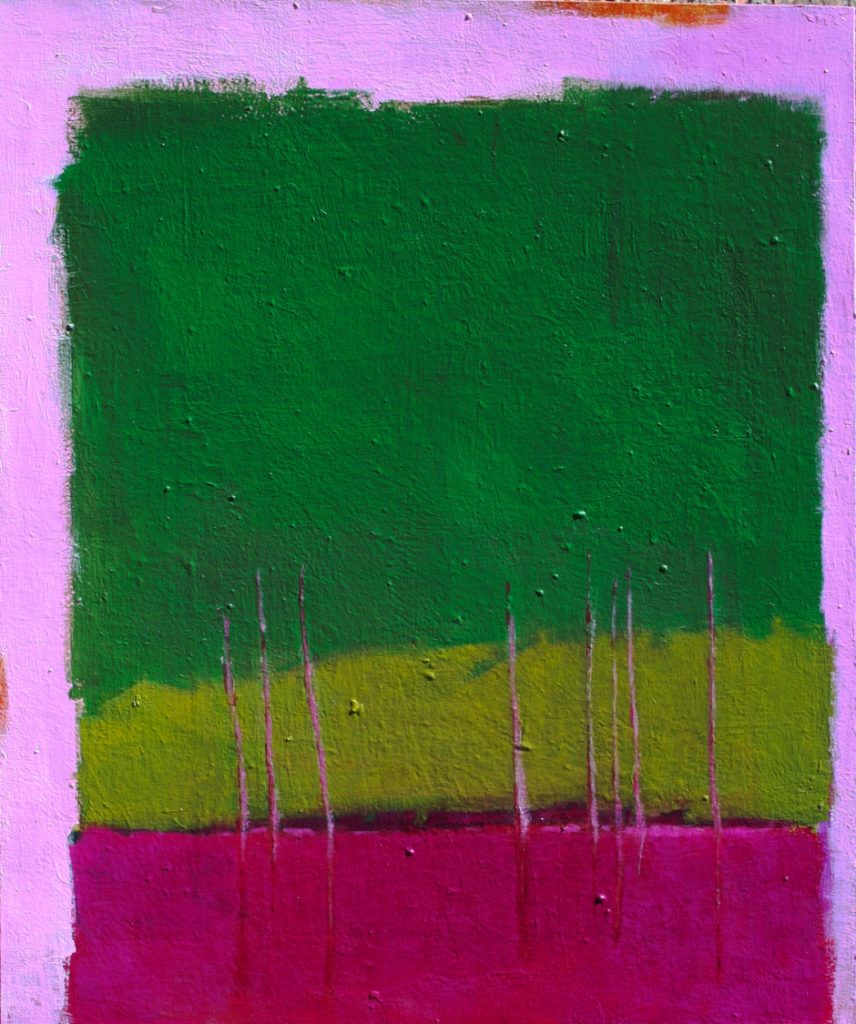
New Jersey artist Maureen Chatfield experiments with portraying abstract landscapes. Here, she discusses color theory, true modernism, and which 20th-century painters influence her style the most.
“When you’re little and you learn a new skill, like playing tennis, it’s very different than when you learn to play in your 20s. That goes for anything. When you’re young, your mind absorbs information in a different way—it goes into you and becomes a part of you. I learned color theory for weeks with a private tutor when I was a teenager. He wouldn’t let me move on until he could point to anything and say, ‘Mix this, mix that.’ Now I teach workshops, and I’ve realized that not many people have been taught how to mix color. Very few artists have a background in it.
I started painting by copying Picasso. His work was non-representational, and I was intrigued by it, so I tried to paint like him. In time, it becomes your own—you have a breakaway moment. Mine was when I worked with a palette knife and oils to paint landscapes. It was always abstract, mostly wooded landscapes with no horizon line. Modern art is really hot right now and a lot of different things are labelled abstract that are actually modern. If you have a horizon line in your painting, it’s not abstract, because you’re grounding it. It can be loose, it can be impressionistic, but it can’t be abstract. When a painter can paint everything that they can see, then that challenge is over. At some point, you have to say, ‘What happens when you have no reference?’ So one day, I faced a blank canvas and forced myself to paint landscapes without a reference point.
Where I live is absolutely glorious. I’ve got big boulders and a waterfall right next to my studio. I’m constantly fed this visual information. My architectural interests come through in the linear stuff going on in my paintings. I feel the structure underneath the landscape and try to portray it.
I love Rothko. I mean, who doesn’t? But you can’t do Rothko because it’s Rothko! I love his premise: boil it down, color next to color. The goal of any painter is to get it down to the bone, find the essence of what you’re looking at. For me, I introduce the verticals through color. Because the mind can then flip into, ‘Hmmmm, are those trees or just lines breaking the plane?’ I like creating tiny bits of allusion because then the viewer is more visually engaged. That’s why I love abstract art—it’s thought-provoking.”

